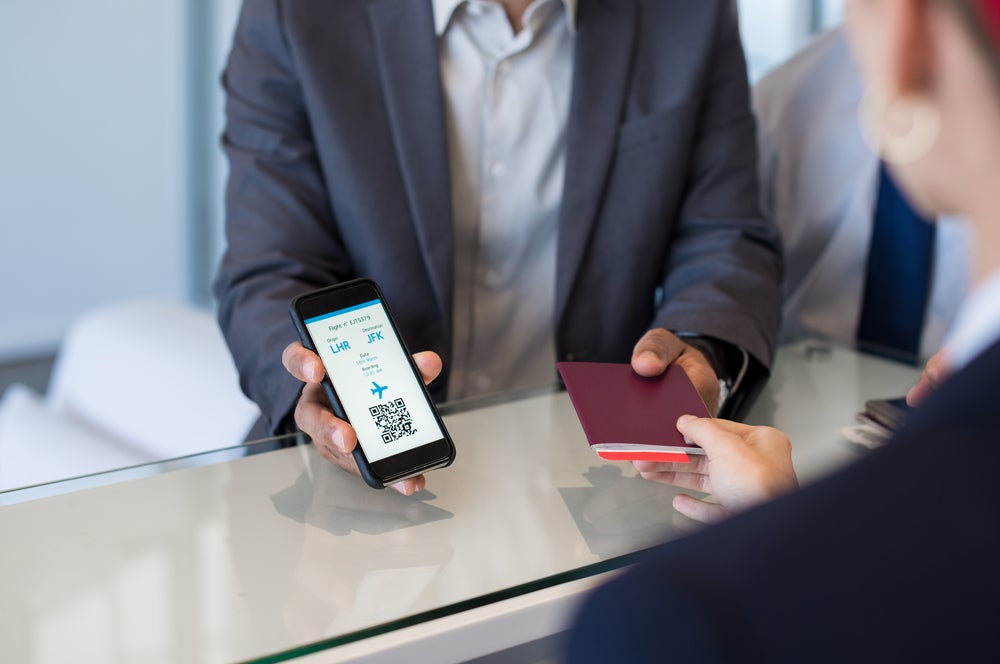
Barry Mansfield: You've paid a lot of attention to Orlando's check-in processes recently. What are your intentions?
ParkerMcClellan: At the ticket counters, Orlando has the ability to carry out a range of check-in processes, whether this involves a manual ticket or electronic ticket. We're looking at common-use self-service, which enables passengers to go to a central location where they can check in for any airline to receive their boarding pass.
We're not the first airport to offer that choice, but we feel very strongly that there's going to be great demand for this brand of self-service. It's expanding as the airlines explore how to use their dollars for labour. They're finding that it's much more effective at the ticket counter to use e-tickets or another form of self-service equipment. We're just putting in the relevant infrastructure to support the airlines in their future endeavours.
BM: So it's fair to say that the airlines are driving Orlando's interest in emerging technologies?
PM: At Orlando we're always asking ourselves the question: who are the stakeholders? Second, what's more important, convenience or process? And third, whose demands are tougher to meet – those of the passengers, or those of the airlines or operators? After all, there's one thing we all have, and that's a boss.
See Also:
People often ask me what the future looks like at the ticket counter, and what the future looks like at the security checkpoint. We're looking into a crystal ball and picking out some of the things we do every day, and seeking to apply them across the board, strengthened by new practices from Europe and other parts of the world. Quite simply, we need to pick and choose what we think will benefit our customers the most.
How well do you really know your competitors?
Access the most comprehensive Company Profiles on the market, powered by GlobalData. Save hours of research. Gain competitive edge.

Thank you!
Your download email will arrive shortly
Not ready to buy yet? Download a free sample
We are confident about the unique quality of our Company Profiles. However, we want you to make the most beneficial decision for your business, so we offer a free sample that you can download by submitting the below form
By GlobalDataBM: And they are quite a mixed crowd. That must make your job harder?
PM: It's true, we have business and leisure travel, but obviously Orlando is a huge family destination above all. It's important to remember that this doesn't just mean children. It extends all the way up to Aunt Suzy and Grandma, and they don't move as quickly through the checkpoint as the five-year-old kid who zips through in no time at all – so we have more complex passenger demands to think about.
BM: You often talk about seamless transportation. What exactly do you mean by that?
PM: Our intention is that travellers enter the property, meaning the airport site, and they are eased into the airport experience comfortably, gently and gradually – from the moment they take the turning and come off the main roads. On top of that, we spend a great deal of time and effort on ensuring a beautiful, light and airy facility. There's no sense that you're entering an airport building. We use skylights, plants and other greenery to achieve that effect. We also try to keep walking distances to a minimum using moving sidewalks or trains.
There's a strong focus on customer service. We have a radio station with a reach of approximately three miles, giving out parking information before drivers actually get to the airport. It also tells you who to call for flight information and informs you where the seating areas are, so you can make decisions ahead of time and you know your decision points. We're not the only facility offering this kind of service. But the objective is to ensure that the passengers' last visit to Orlando will be remembered as a positive one.
BM: 'Seamless travel' suggests a return to the old days of commercial flight?
PM: Sure. Think back to 1914, and the first scheduled airline flight in the state of Florida. There was no security, no tickets and no bags. That was a good example of seamless transportation, and we're trying to go back to that. The industry has transformed. It was traditionally a labour-intensive industry. It used to be heavily regulated, but in 1978 that all changed, and everybody had to start looking at it as a business rather than just another form of transportation.
BM: So ticketless travel is the inevitable destination for operators and carriers?
PM: In future we expect a lot of ticketless travel, but there also needs to be more screening of pre-travel information. When you buy a ticket, much of what you enter into the computer is going to be verified ahead of time, helping to speed up the process.
We were the first airport to launch the public-private initiative called Registered Traveller, a programme that involved the application of technology to verify identity, which has been very successful. So well received, in fact, that there are now more than 20 airports across the US that have followed in our footsteps. And now, international carriers are trying hard to participate, as well. In Florida alone there are 50,000 registrants, with a total of 100,000 nationwide.
BM: How well has your introduction of remote check-in served the airport?
PM: It's one of the innovations we take great pride in, because of the huge scale and the convenience it brings to millions of travellers each year. It enables our customers to check in miles away from the physical location of the airport – at the cruise lines, local hotels, theme parks, resorts and at the convention centre. So it's helped us to draw passengers away from the ticket counters.
They get their boarding pass and check their bags at these remote locations and they then bring their bags to the airport, where they are screened and taken to the jet. You can be at the convention centre – attending a business meeting, say – and check in to your flight at 8am in the morning, but not have to actually board the plane until 10pm at night. You don't have to haul your bag around all day, so that is giant.
15% to 20% of our passengers use remote check-in. Las Vegas has experimented with similar technology, and Victoria station in London may have pioneered the idea some years ago, but we were the first movers in the US in terms of applying it to the air travel business.
BM: What would you say is the key to a successful technology implementation, then?
PM: I believe in strong partnerships and communication. At the ticket counter you have the airlines, the airport and TSA (Transportation Security Administration).
They're all involved somewhere in the ticket process. It's important everybody works together so you have some established goals. Is the goal to have short queues, or is it to have a super-efficient ticket counter? The answer is going to be somewhere in-between; but of course, seamless transportation is always the goal.
BM: And you prefer open technology standards?
PM: Yes, we try to use common platforms, not proprietary technology. We try to build a platform that's flexible, so it can be updated and modified, because technology changes so quickly. On top of that, we participate in many pilot programmes, in order to benefit from a preview of the hottest new technologies in the field. Whatever they are, we want to know ahead of time.





